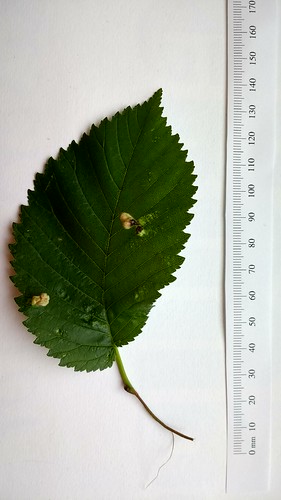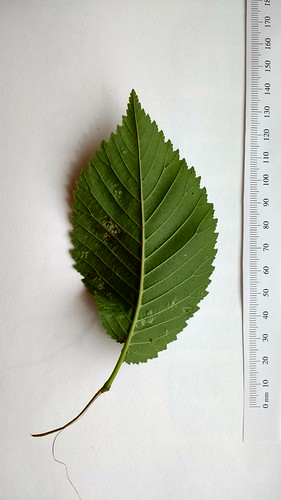Since I started my leaf blog, I'm having a harder and harder time choosing a tree and leaf to look at—not because I'm running out of choices, but rather the opposite: there are so many tantalizing choices, its difficult to pick the next one. This time, I choose an American Elm (Ulmus americana) right behind the Morrill Science Center (Fig. 1).
Figure 1. Ulmus americana leaf. Upper side is on left.
The Elm has ovate leaves with a double, or triple, serrate margin and asymmetrical base. The leaf has pinnate venation and there are approximately 13 side veins on each side of the leaf. About half of the side veins have branches near the margin of the leaf. The leaf has a very fine downy fuzz on both the upper and lower surfaces. The stem is quite short relative to the leaf.
Once again, I'm wondering a bit about the distance between the side veins and the sizes of the smallest areas of the leaf served by the venation system. The side veins seem close together, relative to other leaves I've looked at recently.
On the surface of the leaves are irregularly shaped galls with a pebbled surface. The galls have a yellowish color, although some have become black. On the underside of the leaf, there are gray fuzzy areas that correspond to the gall on the upper surface. There are a number of areas where the leaf surface is rough on the surface and fuzzy underneath, but where there is not an obvious gall: perhaps there are two phenomena.
- Steven D. Brewer's blog
- Log in to post comments


